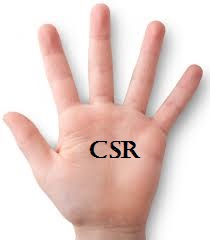You may have read about it in some literature; you may have heard about it over some discussions; you may have even mentioned it in some of your write-ups. But how well do you understand the concept? How much of its underlining principles do you know? Can you make a business case for the circular economy before your board? How prepared are you to put it into practice as a sustainability professional? To provide a positive answer to these questions, come along.
 Circular Economy
Circular Economy
The circular economy emerged as a sustainable alternative to the linear economy’s ‘take-make-waste’ orientation. The World Economic Forum (WEF) reported that in 2019 alone, over 92 billion tons of materials were extracted and processed, contributing to about half of global CO2 emissions. In the prevalent linear economy, the manufacturing process takes raw materials from the environment, turns them into new products, thereafter disposes them into the environment
after use. The linear economy has over the years been identified as an inefficient model that does fit into the sustainability culture of the new world economy. The linear economy ensures that landfills are created continually to accommodate the increasing body of waste coming off through production and consumption; it puts pressure on the resource base through increasing demand for virgin materials in the production process; the net environmental impact of commerce and industry under the linear economic model remains negative. Then entered the concept of ‘Circular Economy’.
 Simply put, Circular Economy (CE) refers to an economic model aimed at eliminating waste through continuous safe use (and re-use) of resources. UNIDO talks about the circular economy as a new way of creating value, and ultimately prosperity which works by extending product lifespan through improved design and servicing, and relocating waste from the end of the supply chain to the beginning, thereby creating efficiency in the use of resources by using them over and over, not only once. Circular economy requires that wastes created at the end of the supply chain should not necessarily end in the landfills but should be returned to the beginning of the supply chain to be re-introduced into the production process. Therefore, the central theme of the circular economy is Recycling. When process wastes are recycled back into the production process, less demand is placed on virgin resources, waste pollution is eliminated and environmental sustainability improves. Thus, the World Economic Forum (WEF) talks about CE as an industrial system that is restorative or regenerative by intention and design. Hence, the circular economy is forward looking and pro-active in approach: it builds efficiency starting from product design (design-out waste) – products are designed for durability, reuse and recyclability. Modern thoughts on the circular economy are believed to be an off-shoot of the concept of ‘Cradle to Cradle designs’ which focuses on quality of products (including safety for humans) and environmental health. The cradle to cradle (cradle 2 cradle) concept remains and integral part of every discuss on circular economy.
Simply put, Circular Economy (CE) refers to an economic model aimed at eliminating waste through continuous safe use (and re-use) of resources. UNIDO talks about the circular economy as a new way of creating value, and ultimately prosperity which works by extending product lifespan through improved design and servicing, and relocating waste from the end of the supply chain to the beginning, thereby creating efficiency in the use of resources by using them over and over, not only once. Circular economy requires that wastes created at the end of the supply chain should not necessarily end in the landfills but should be returned to the beginning of the supply chain to be re-introduced into the production process. Therefore, the central theme of the circular economy is Recycling. When process wastes are recycled back into the production process, less demand is placed on virgin resources, waste pollution is eliminated and environmental sustainability improves. Thus, the World Economic Forum (WEF) talks about CE as an industrial system that is restorative or regenerative by intention and design. Hence, the circular economy is forward looking and pro-active in approach: it builds efficiency starting from product design (design-out waste) – products are designed for durability, reuse and recyclability. Modern thoughts on the circular economy are believed to be an off-shoot of the concept of ‘Cradle to Cradle designs’ which focuses on quality of products (including safety for humans) and environmental health. The cradle to cradle (cradle 2 cradle) concept remains and integral part of every discuss on circular economy.

Principles of the Circular Economy
Some of the key principles of the circular economy include: waste = food; Resilience through diversity; energy from renewable resources; and think in systems.
- Waste = Food: – The concept of circular economy is based on the idea of zero waste. This principle requires continuous cycling and recycling of materials and products rather than discarding them as waste. This principle aligns with nature’s course wherein one species’ waste is another species’ food.
- Resilience through diversity: CE demands that the production and consumption systems should leverage on the biodiversity in the ecosystem and the diversity in the human economic space (in terms of resources) to reboot the system at all times such that inputs for the production process are sourced from the supply chain. This ensures resources continue to flow continuously within the circle, as opposed to the linear approach.
- Energy from Renewable Resources: CE requires that energy be sourced from renewable sources; it emphasizes Solar energy, wind power and tidal power as against the popular use of oil and gas. This is not unconnected with the natural system wherein plants generate their food through sunlight.
- Think in Systems: A central message of CE is the need to work as inter-connected systems rather than stand-alone units. CE works better with different groups working together to create effective flows of materials and information to keep the circle unbroken. As a result of this principle, global success of the CE concept thrives on collaborations and partnership.
Business Benefits of the Circular Economy
One of the benefits of the circular economy that would be news-worthy in the boardroom is the cost savings it affords by re-using resources rather than outright re-purchase. In other forms, CE creates additional income stream in situations where the waste is not directly re-useable by the producer but could be sold to another process owner. An example would be a diaper manufacturer who instead of disposing diaper wastes into the landfills sells same to a recycler who converts the wastes into pellets to be consumed by the plastic manufacturers as input. Thus, the diaper manufacturer not only earns revenue from sales of waste, but also saves the income that would have been expended in carting away the wastes to the landfills.
Another business benefit of the circular economy is that it reduces negative environmental footprints. Today, across our towns and cities, the drains, canals and beeches bear witness against global brands who are fully represented (by their product packages) in the environmental pollution bedeviling the world. In the face of sustainability, the negative impact of this unfortunate representation can no longer be ignored by boardroom participants. Again, by designing efficient production systems, CE leads businesses out of avoidable costs like carbon tax, gas flaring charges, pollution fines and distrain on license to operate.
Healthier margins are among the benefits that accrue to business as a direct consequence of the circular economy. Reduction in material intensity results in lower production costs; designing-out waste also reduces cost of production by eliminating resource over-use in the production process. These actions translate to margin improvements for the businesses; margin improvements would pave way for more profits, thereby creating leverage for business growth and expansion. In all, it is reported that the circular economy offers an alternative that can yield up to $4.5 trillion in economic benefits globally by 2030.
 How Ready are You to Join the Circular Economy?
How Ready are You to Join the Circular Economy?
Like the SDGs, the circular economy recommends continuous partnerships and collaborations to enable professionals and businesses thrive in the circular economy. PACE (Platform for Accelerating the Circular Economy) is one of the global partnerships driving the switch-over to circular economy. PACE was launched in 2017 by the WEF as a platform for public and private sector leaders to take commitments and accelerate collective action towards the Circular Economy. PACE consists of about 80 public, private, international and civil society executive leaders and over 200 members championing 18 projects across the globe. Some of the initiatives under PACE include:
- Global Plastic Action Partnership
- Circular Electronics Action Partnership
- Global Battery Alliance
- Scale360°
- The Circular Economy for Net-Zero Industry Transition
Now that you are informed, go join the circular economy and reap the amazing benefits

The CSR Arena is a CSR advocacy and sustainability-reporting-analysis champion. We encourage and celebrate effective CSR and positive social impact by responsible corporate citizens; we celebrate international best practices in sustainability reporting across different economic divides. Our goal is to realize the dream of development scholars that, ‘corporates, more than governments, would bring about the much needed sustainable development across the globe. We partner with FBOs, NGOs, CBOs, governments and corporates to spread the message of sustainable development and corporate sustainability. Our platforms bear tales of good corporate citizenship – grab the microphone that you may be heard. Contact: news@thecsrarena.com



